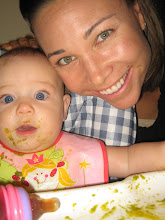This article focused on web syndication in a 2.0 web world. The difference between web 1.0 and web 2.0 is that in a web 1.0 environment the user finds the information and explores various websites by going to those websites. In a web 2.0 environment, the information comes to the user through web syndication. Web syndication is a method that makes a portion of a websites available to other sites. RSS, Really Simple Syndication, refers to the availability of a web feed. This is changing the way students can collaborate in classrooms. There are numerous classroom opportunities for web syndication including following multiple student postings, facilitate collaborative writing, share images associated with class projects, and track new topics related to a subject area. The article mentioned numerous programs/technologies that make web syndication available to users.
Following Multiple Student Postings can be achieved by having students create an individual blog where they post different classroom assignments, and the teacher would have access to view all student blogs. Web based readers mentioned in the article include; Firefox, Thunderbird, the next version of Outlook, and bloglines.
Facilitate Classroom Writing can be achieved by having students collaborate on classroom projects/assignments by using Writely which is blog friendly. Writely allows students to jointly create and edit a document from any location. Also mentioned in the article are Web 2.0 to do application TaDa which allows students to make checklists for project planning, and has a RSS feed; and Web 2.0 photo sharing Flickr which allows students to select images and tag the images with an agreed upon descriptor. Flickr provides a RSS feed for tagged descriptors. The applications mentioned are free to users, store information on the web, and have RSS feeds.
Following a topic of interest is easy with syndication. Major newspapers like the New York Times and Washington Post offer RSS feeds for every story they cover, and in Bloglines, you can create a RSS feed that provides an updated search for a topic of interest.
Question #1: What does following multiple student postings look like? I am doing this in my EDU 422 class. My professor had all the students in the class create an individual blog, using blogger.com, where we post journal entries and various classroom assignments. My professor created a class blog where students can obtain information relating to the course, as well as view other student blogs.
Question #2: What does the Web 2.0 desk offer? The services of a Web 2.0 desk are live; the newest mail appears in the mail window, the latest Flickr image appears in the photo window, and the current/local weather is listed in the weather banner.
Bull, Glen (April, 2006). Collaboration in a Web 2.0 Environment. ISTE, Retrieved 03, 07, 2009, from http://www.iste.org/AM/Template.cfm?Section=April_No_7_&Template=/MembersOnly.cfm&ContentFileID=2642
Sunday, March 8, 2009
Subscribe to:
Post Comments (Atom)


Hey Eryn,
ReplyDeleteGreat blog!! Hey, I do want to collaborate with you on the project! I answered your WebCT e-mail; however, I have not received anything on my Google account.
Hope all is well!
A.J.